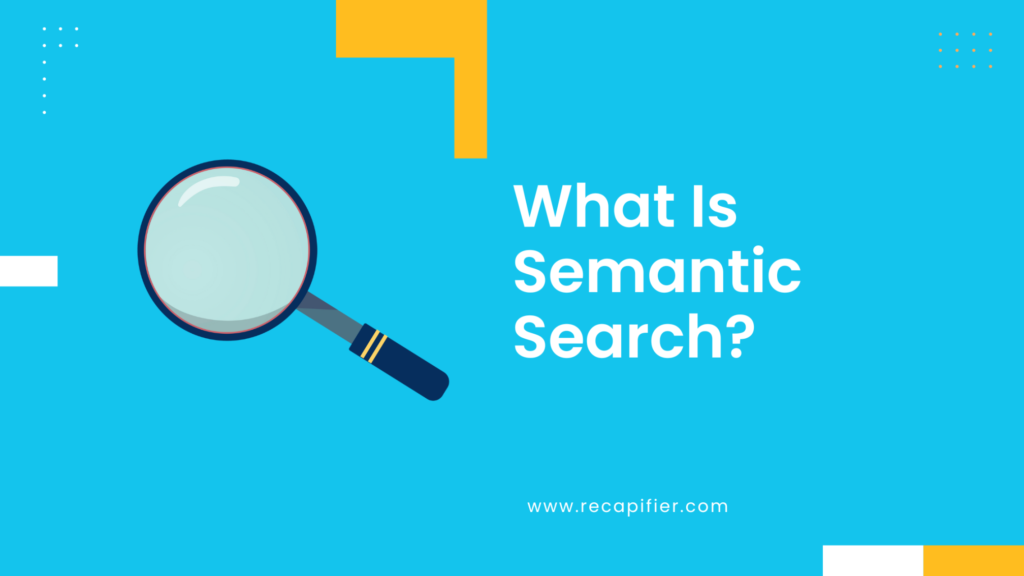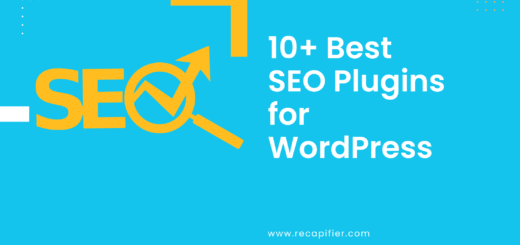What Is Semantic Search?

Semantic search, in a nutshell, is how search engines use context to understand the user’s search query and provide results that best match their search intent. In other words, it’s how search engines understand natural language (i.e. human language).
So, if you’re looking for a way to attract relevant site visitors and enhance the SEO of your website, you might want to focus on the search intent of your target audience.
Knowing the search intent of your audience and using keywords to help them find relevant content is the new age of SEO. Enhancing the SEO of your site isn’t as easy as stuffing keywords anymore, you need to take into consideration other factors such as search intent and providing relevant information. This is where semantic search SEO comes into play and makes it important to consider user search intent when optimizing your content for SEO.
In this article, we’ll talk more about what semantic search is and understand better how it affects the overall SEO of your website. In addition to this, we’ll also go over some effective ways that can help you improve the semantic search SEO of your content.
What is semantic search?
Semantic search is a process when search engines such as Google go beyond displaying web pages on top of search engine results based on just relevant keywords. Instead, user search intent and the actual meaning of search queries are taken into consideration as a way to deliver more relevant and high-quality answers or search results to users.
However, it’s important to note that semantic search is different from lexical search. Lexical search was used by search engines that required users to enter the exact and correctly spelled keywords when finding the content they were searching for. Even after users entered the exact keywords, the search results would still end up irrelevant and different from what the user was looking for despite it being filled with literal keyword matches.
Semantic search takes into consideration user search history, user locations, global search history, and spelling variations for displaying results to users or ranking your content in search engine results.
5 factors to consider when optimizing semantic search SEO
Here, we’ll dive deeper into some of the factors to consider when optimizing semantic search SEO for your website.
#1. Content topics are more important than stuffing keywords
Contrary to popular belief, old SEO techniques are mostly directed toward stuffing a high volume of keywords in clever ways that help search engines view your content as “valuable”. But now due to semantic search SEO, it’s far more advanced and requires actual valuable content for it to be ranked higher in users’ SERPs.
So instead of just adding high-priority keywords to your content, consider optimizing it for user search intent and offer more value by creating high-quality content. This helps Google and other popular search engines rank your web pages higher in search results and helps display your high-quality content to your target audience based on their search intent.
#2. Optimizing featured snippets and rich results is a must
Google displays featured snippets as the most helpful answer based on user’s search queries. Since we’re talking about optimizing semantic search SEO, featured snippets also affect the overall semantic search SEO of your website. This is because Google uses featured snippets to give users the most helpful and direct answers.
Similarly, optimizing your content to help search engines display rich results is also crucial for improving the overall semantic search SEO of your site. For instance, you can include images and links to statistics that will help search engines better understand your content and display rich results when user search intent.
#3. High-priority keywords are still important
While semantic search SEO is all about optimizing your content according to your target audience’s search intent, it’s still important to add high-priority keywords to your content. This is mainly because while Google and other search engines are trying to implement semantic search queries in their ranking system, it’s still in the works.
This way, it’s still beneficial to add keywords to your title tags, header, or body tags that help rank your content higher in users’ SEPPs and enhance semantic search SEO.
#4. Technical SEO also matters
Other than using high-priority keywords, using all technical SEO tactics is still important for optimizing the overall SEO of your website. For instance, you can still use the right keywords according to your target audience and hire a quality content writer to produce high-quality content for your business.
In addition to this, you can also improve the SEO of your site by making sure your site servers and database is optimized and free of clutter. You should also look to fully optimize your content and website for mobile users as it’s a major factor in displaying your content higher in search engine results and improving semantic search SEO.
#5. Voice search queries are also important
Voice search queries are also very direct and add another layer of meaning to search queries. This gives search engine robots and crawlers a chance to process semantic search queries better and helps identify your content as the direct answer to users’ queries.
This also means you need to optimize your content for voice search queries so that it’s displayed to users with relevant search intents and helps display your web page higher in search engine results.
How to enhance semantic search SEO of your website
Let’s take a closer look at some of the most effective ways to enhance and optimize the semantic search SEO of your website:
#1. Optimize content for topics
As mentioned earlier, semantic search SEO is directly affected by your content’s topics more than high-priority keywords. This makes it even more important to understand and use keywords in a more semantic context when optimizing your content for search engines and user search intent.
Ideally, you want to create high-quality content that’s valuable for your audience while also ensuring that it contains high-priority keywords in a semantic context. As a result, it can help improve the overall ranking of your web pages in SERPs while also improving the semantic search SEO of your web pages.
#2. Keep search intent in mind when optimizing SEO
If it’s still not obvious; search intent is one of the biggest factors that impact semantic search SEO on your website. This is because search queries are not just random strings of words put together. Instead, they tell you what kind of information users or searchers are looking for and how you can tailor your content according to that.
As a result, it can help lead more people to your website thanks to semantic search SEO as it directly addresses their search intent and helps them quickly find the content they were searching for.
#3. Use latent semantic indexing keywords
Before we jump into how you can use latent semantic indexing keywords, it’s important to first understand what the term means.
Semantic indexing keywords are in a sense related to your primary keyword and help give it more context and meaning. This way, search engines have an easier time identifying user intent and finding more meaning in your SEO keywords.
For instance, if your primary keyword is “semantic search SEO” you can use more meaningful, indexing keywords such as “user intent search engine optimization” or “semantic keywords optimization”.
#4. Use a semantic keywords tool
Lastly, if you’re having a hard time learning how to create semantic search SEO keywords and use them on your website, your best bet is to use a semantic keywords tool.
Here are some of the top, robust tools that can help you create high-priority semantic search-optimized keywords for your content:
- Google’s Keyword Planner. One of the most popular keyword tools, Google’s Keyword Planner also offers you the ability to search and go through hundreds of keywords based on search intent, and search volume, and choose the best one based on how meaningful and relevant it is to your content.
- LSI Graph. LSI Graph is also a great keyword tool that lets you generate long-tail keywords as well as suggests titles and headings that you can use in your content to optimize the SEO of your website.
- Twinword Ideas LSI Graph. This tool is highly recommended for generating semantic keywords and visually identifying the link between them. In addition to this, it also gives you access to valuable data such as keyword search volume and keyword competition.
Conclusion
While most traditional SEO techniques require stuffing keywords all over your web pages in clever ways, search engines have evolved into displaying content that is more meaningful or content that fulfills user search intent the best.
This makes it even more important to implement semantic search SEO of your content so it’s displayed to your target audience higher in search engine results.
Do you have any questions on how to improve the semantic search SEO of content? Let us know in the comments box below.





